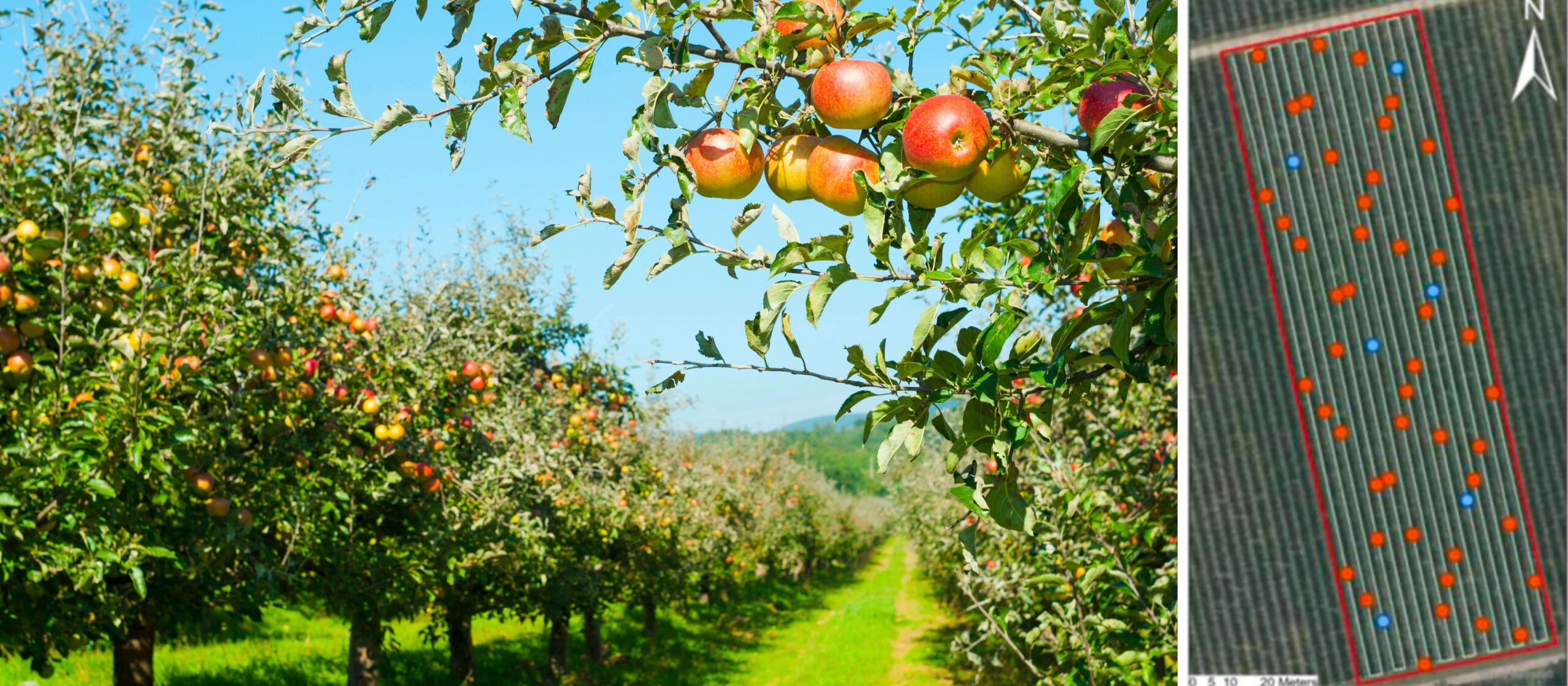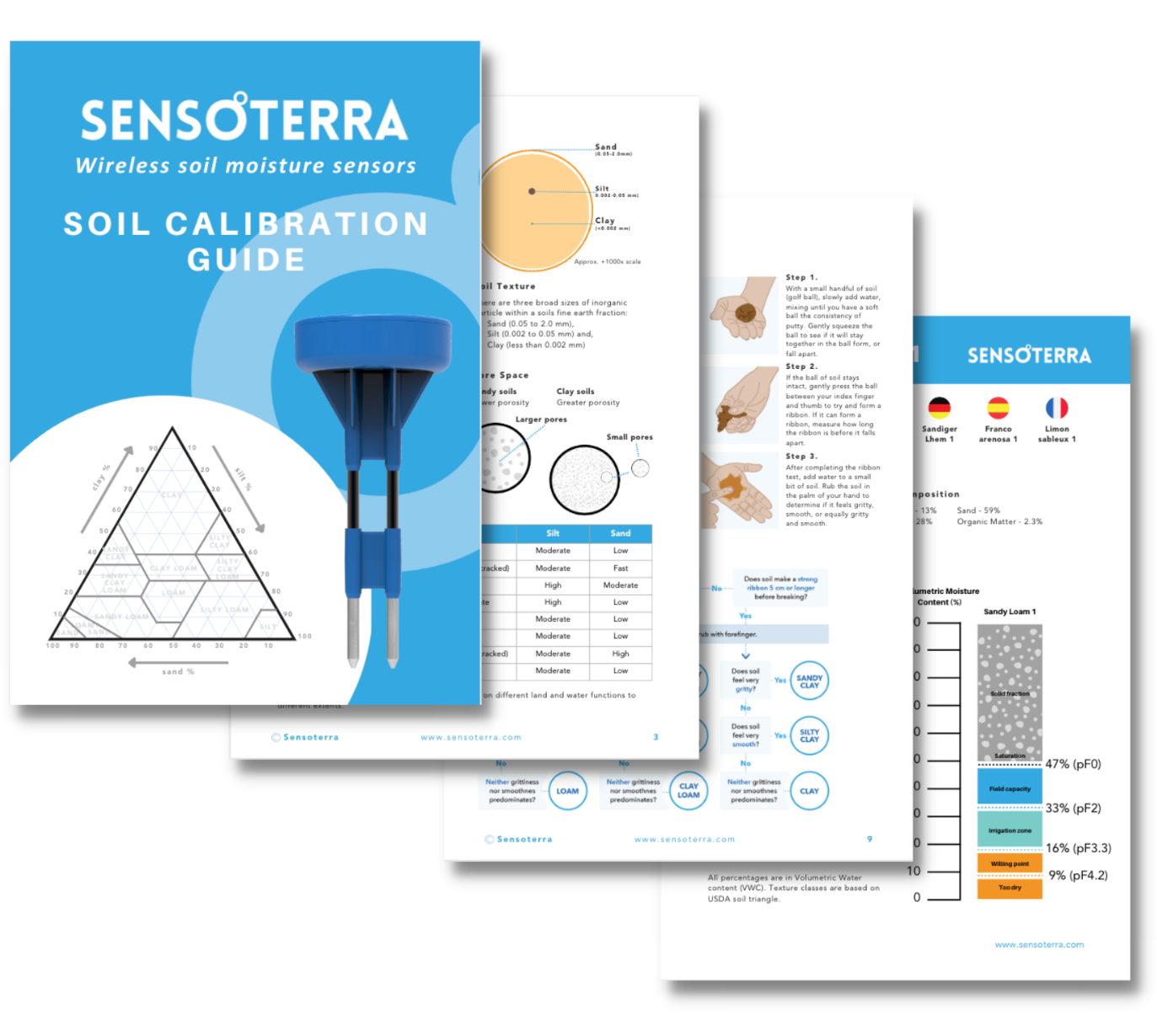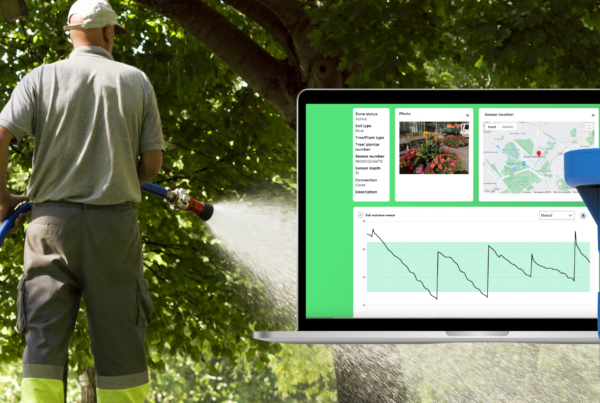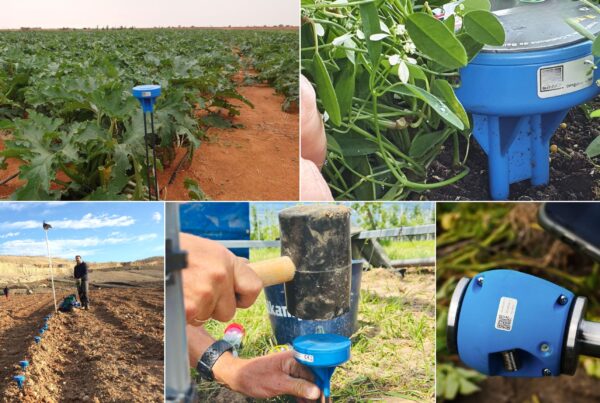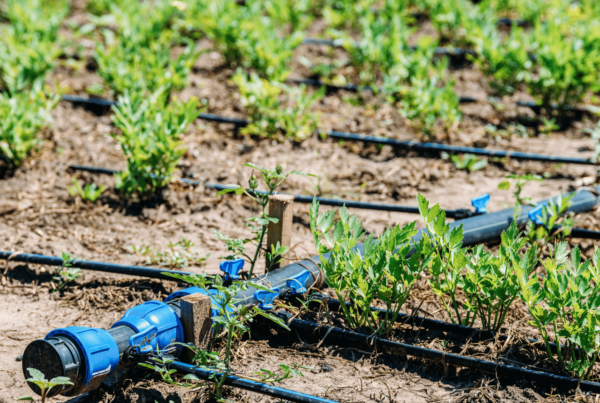It all starts with the soil – that’s why we’ve developed the free Soil Calibration Guide!
Soil texture can change a lot within a field. A soil texture in one spot, can be very different just a few paces away. Like this photo below, where an orchard parcel of 180m x 60m has a sweeping variation across sand, loamy sand, loam and clay. Which is why identifying the right soil texture is critical for setting the calibration of soil sensors.
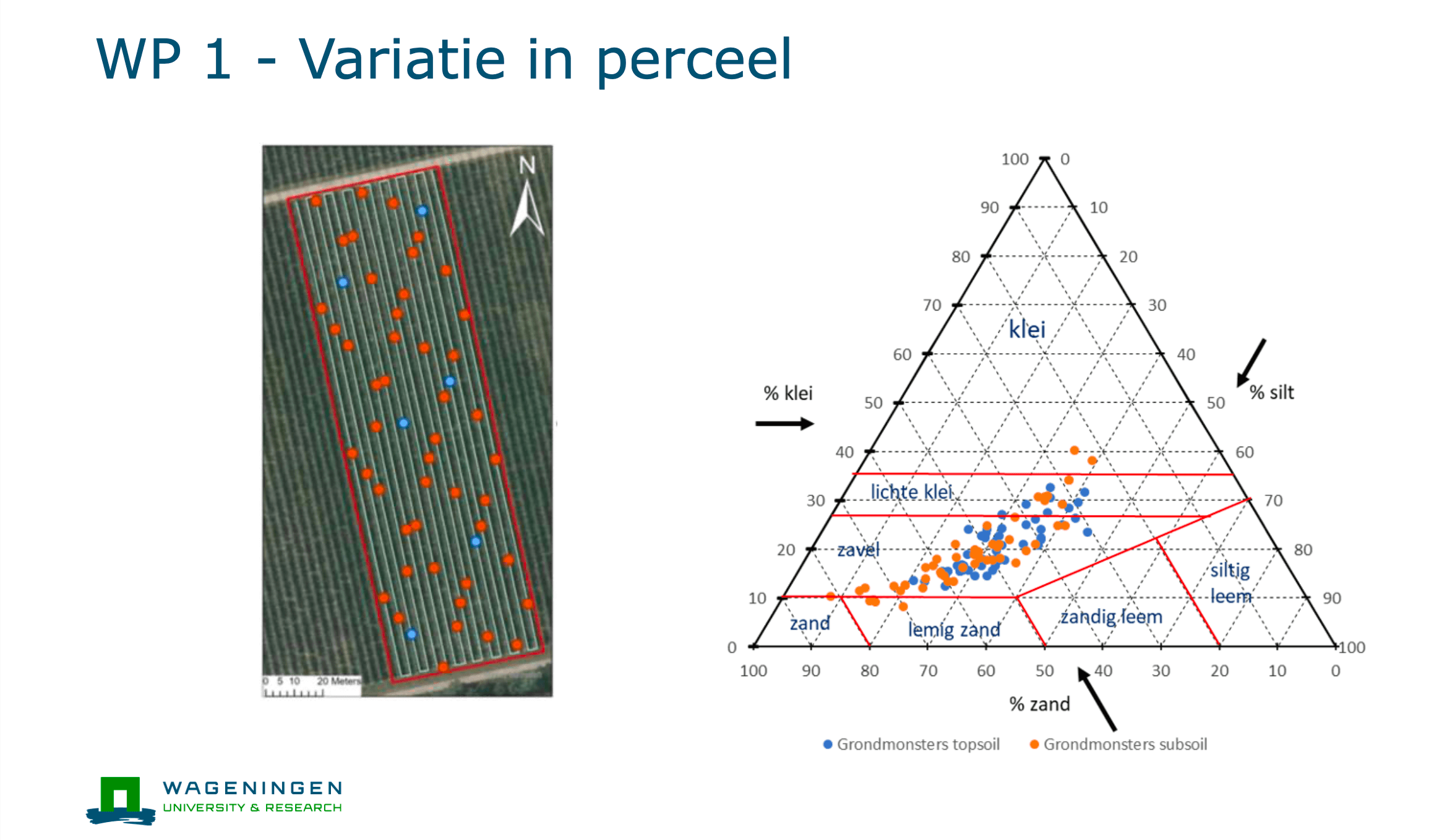
Variation of soil in a parcel: This is a great example to display the variation of soil within a field, and why soil moisture readings may vary slightly from meter to meter. Courtesy of Wageningen University & Research
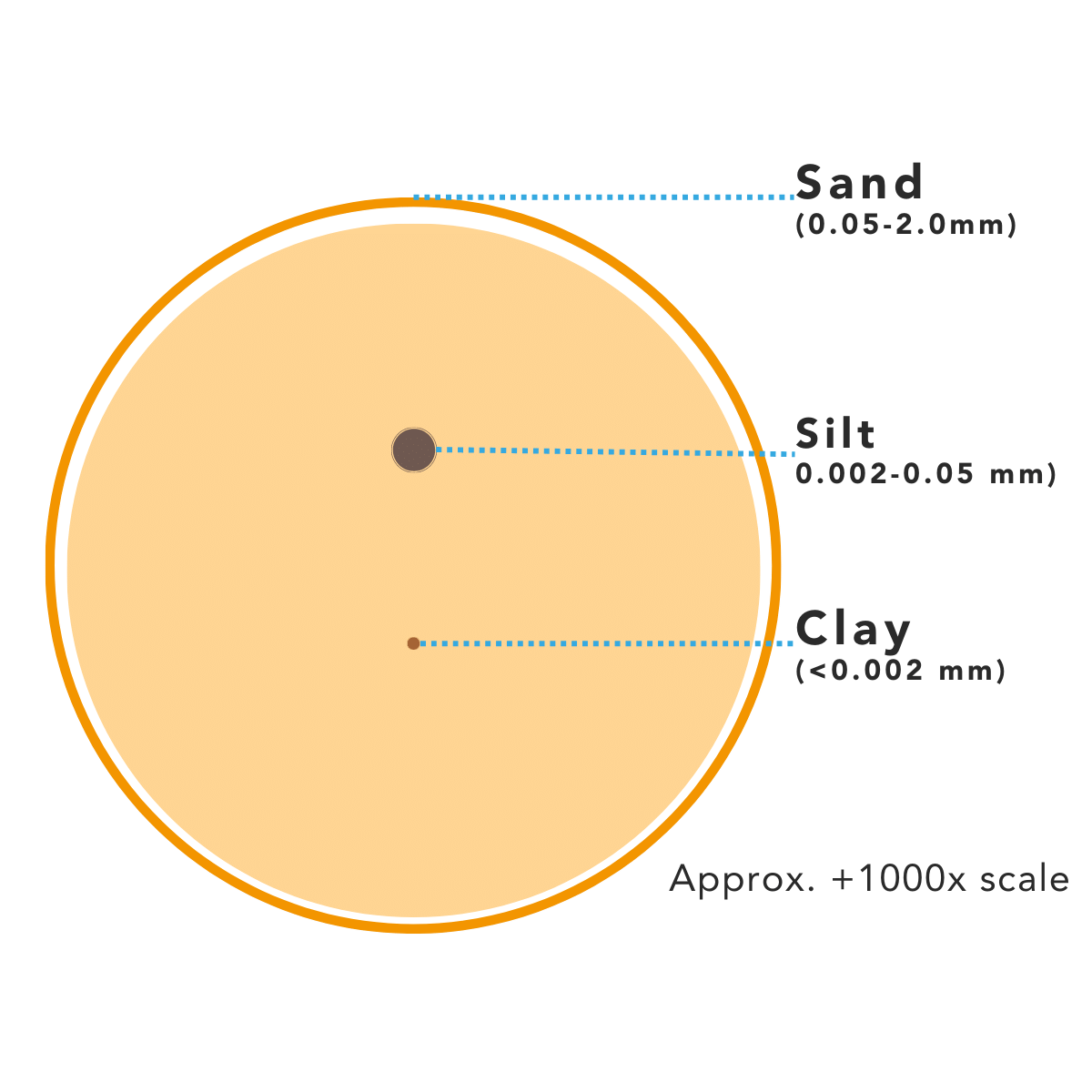
Soil particles
Soil particles (sand, silt, clay) react differently when exposed to water. Sand particles, massive in comparison to silt or clay particles, allow moisture to easily flow through due to the low comparative surface area of clay particles, which binds to water molecules retaining moisture more easily.
Soil Texture Triangle
It’s important to understand the local soil conditions when setting thresholds for irrigation, or even just monitoring the processes and behavior of moisture within a soil.
The different ratios of these particles in soil defines the soil texture classes. We use the USDA texture triangle, which defines twelve classes. Most agricultural soils fall within this curvature, sand, loamy sand, sandy loam, loam, clay loam, and clay soils. The specific percentage ratio of the three soil particles determines where exactly a soil falls within this texture triangle.
Sensoterra offers 30+ standard calibrations in our soil calibration library.
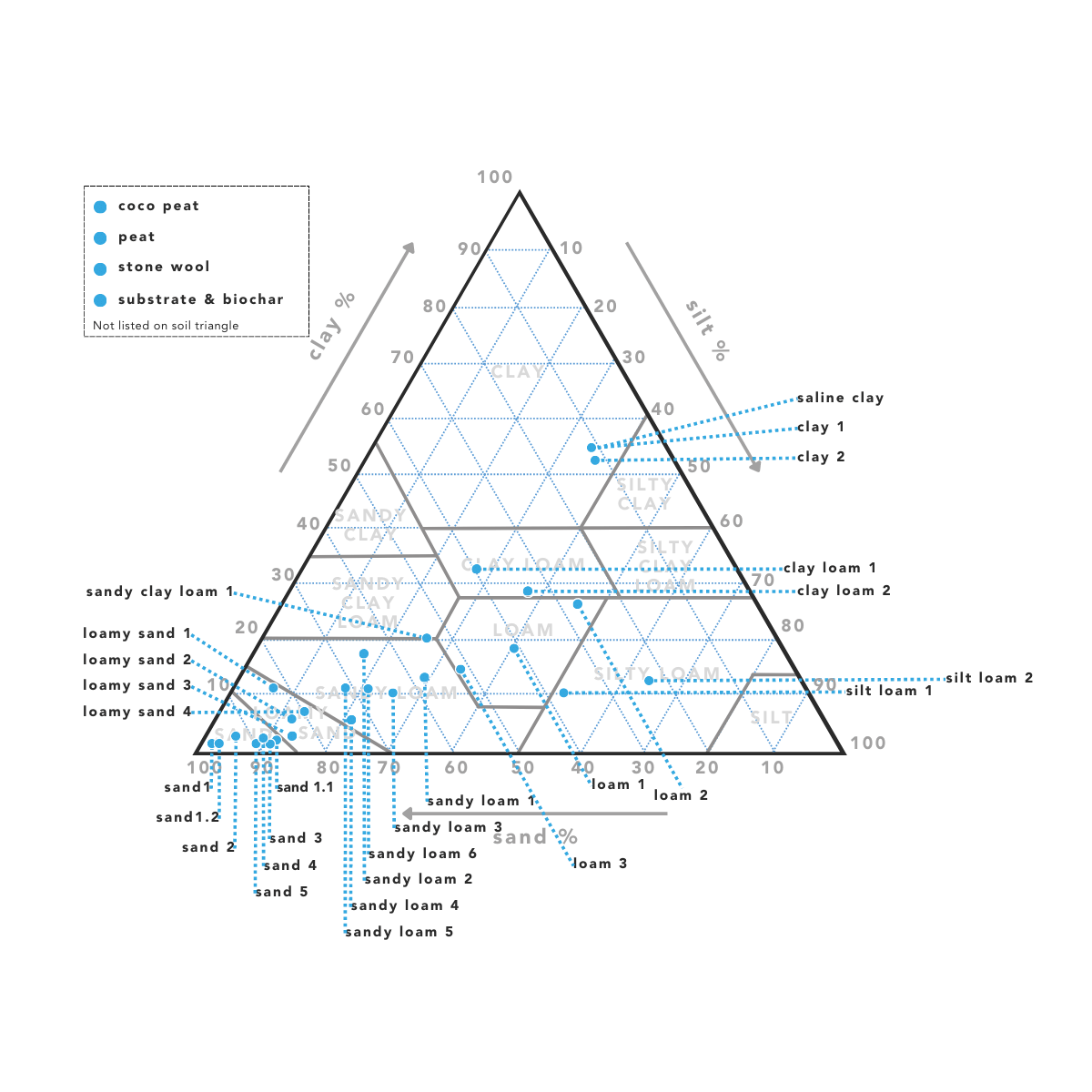
Soil & Water
There are many different factors influencing soil moisture behavior. Besides soil texture, organic matter content, bulk density and compaction, porosity, and salinity influence the way water is held. Soil texture is largely the most influential factor. Infiltration rate, or the rate at which water flows from the soil surface through the rhizosphere to ground water, is important to understand when monitoring soil moisture levels for optimum plant growth.
Because the flow of water is subjective to soil type (again, that’s the binding of water molecules to the soil particles, organic matter etc.) we need to know what water is available for plant uptake. Too little water within the rhizosphere, and plants suffer from water stress and visible loose turgor pressure, and wilt. If they stay in this wilted state for too long, they’ll reach permanent wilting point and will die off. Similarly, if there is too much water in the root zone, plants will become hypoxic and ‘drown’. This is why maintaining soil moisture within a healthy zone, of approximately 25% air, 25% water, and 50% soil (solid fraction) is most beneficial to plants and soil biology.
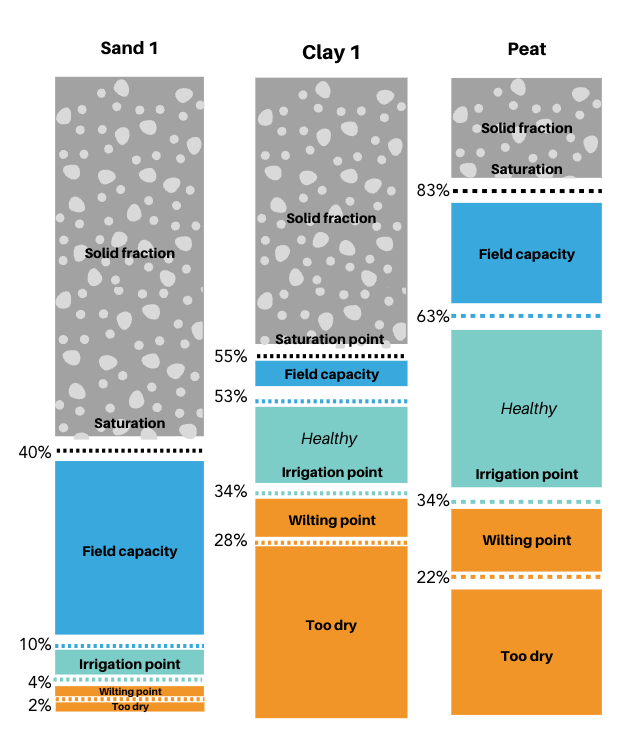
Visible differences in soil moisture values and thresholds for different soil types. Given in volumetric water content (VWC) percentage.
The Sensoterra sensors work in all soil types. However, the right calibration is crucial for improving the accuracy and precision of the soil moisture measurements. Sensoterra has its own laboratory, based in Utrecht, where soils are analyzed to add new calibration curves to continuously improve soil moisture accuracy.
We’ve put together this reader to support your decisions on selecting the correct soil type by sensor.
Why calibrating soil moisture data is important
To better explain this process, below are three soil calibration sheets from our free Soil Calibration Guide that show clearly the differences between soil texture and moisture behavior. Clay1, Loam1, and Sand 1
The volumetric moisture content differs greatly for the three, and this is why one-size doesn’t fit all, when it comes to soil. The points of saturation, field capacity, healthy irrigation zone, and wilting point, using the Volumetric Water Content and correlating pF values, vary greatly by soil type.
Sensoterra philosophy
Knowing this, let’s go back to the first image of the different soil types within this apple orchard. This is why we’re driven to make low-cost soil moisture sensors, which can be placed all over a field to give the right indication of water behavior within that field. We get asked all the time, how many sensors do I need to place? This is largely dependent on the field conditions. But more data, means better decision making.
-
- This fuels our philosophy, and why all our sensors are:
- Hammerable (patented), easy to install and move around a field
- Are low-cost, and have a low TCO, meaning more sensors can be installed for less money than other systems
- Hourly data is easily retrieved and built to integrate (API first) for even better land management decision making
- Are 100% maintenance free, with a built- in battery for an 8-year lifetime
- Offer high accuracy is achieved with an extensive library of standard soil calibrations
- Different lengths are available for different applications, measuring at the root zone
This takes the guess work out of water management. We support growers and land managers to make data driven decisions on how to work better with the local soil conditions for optimum plant growth, and soil health.
About Sensoterra
Sensoterra is a pioneering leader in the field of wireless soil moisture sensors, offering cutting-edge IoT soil moisture sensor solutions for smart agriculture. Our state-of-the-art Sensoterra soil moisture sensors are at the forefront of agriculture IoT, providing unparalleled soil moisture monitoring capabilities.
Our commitment to precision agriculture technology allows farmers to make informed decisions, optimize their irrigation systems, and embrace sustainable farming solutions. With Sensoterra, access to real-time soil moisture data is at your fingertips, enabling precise water management and water resource management for your agricultural operations.
Sensoterra, established in 2015, with its headquarters in Houten, The Netherlands, develops water management solutions for agriculture/horticulture, smart city management, and water governance. Sensoterra has over 12,000 sensors in the ground globally, and generates hundreds of thousands of data points for smart water management, daily. Learn more at www.sensoterra.com
Contact for more information, pictures and/or interview requests:
Jessica Nuboer
Marketing & Communications
Sensoterra
Email: [email protected]

